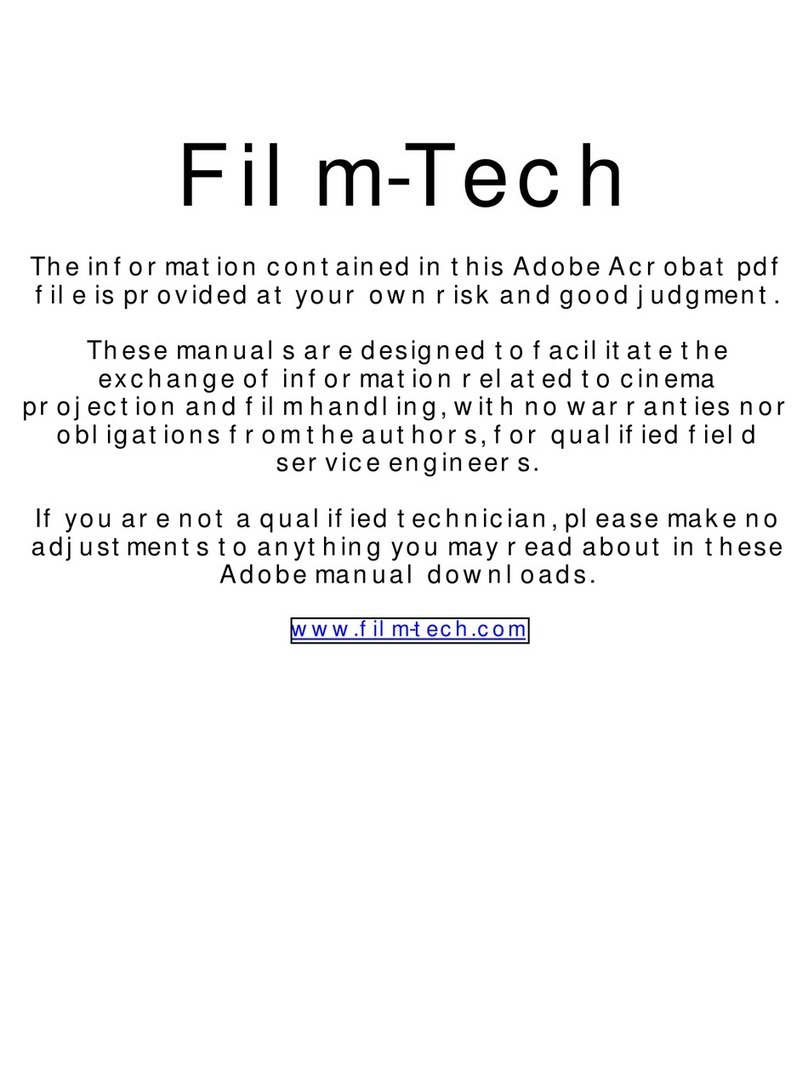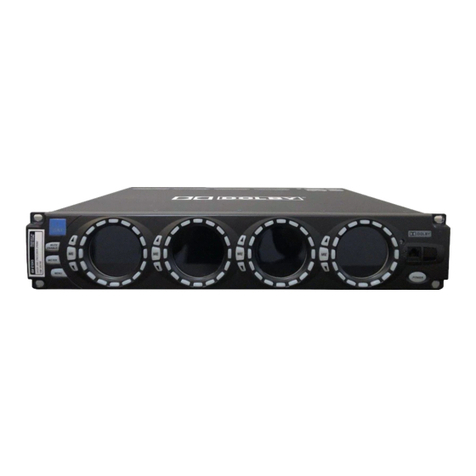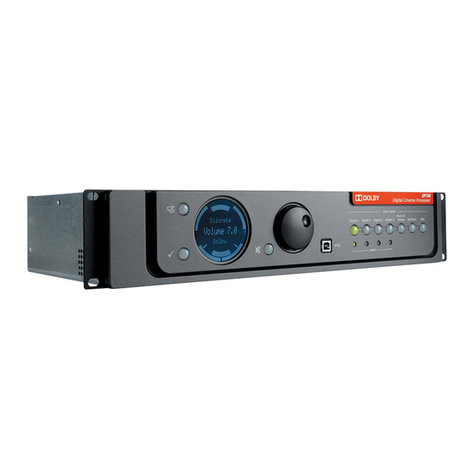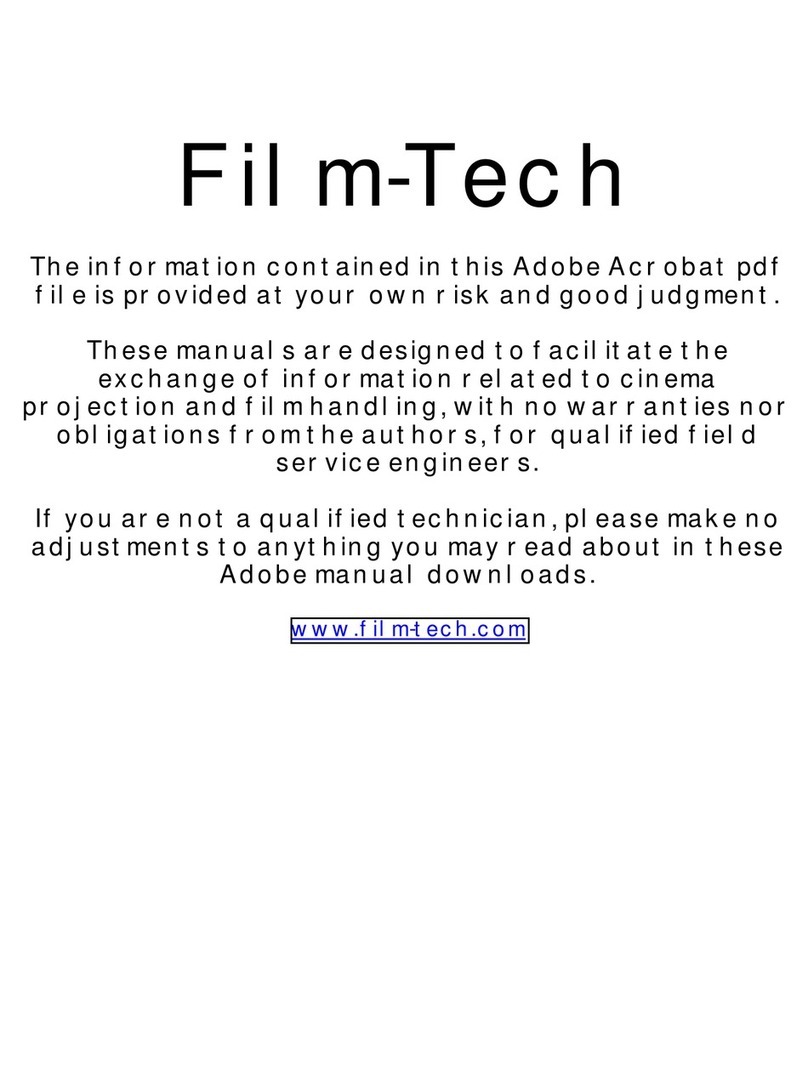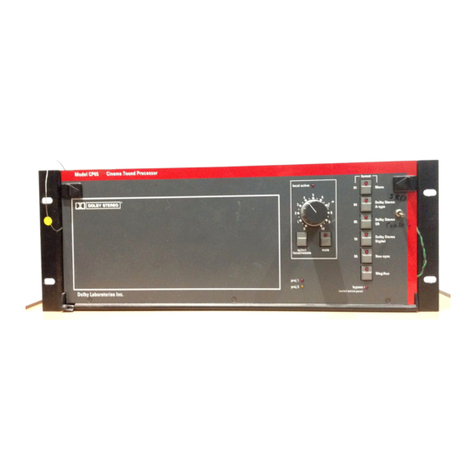1-3
•64 Mic: for public address announcements in the theatre.
Thefilm soundtrackformat numbers used onthe CP45front paneloften
appear on the film can and leader. If these numbers are not supplied
and you are not sure if a print is mono or stereo optical, see Appendix
A for a means to distinguish mono from stereo optical soundtracks.
If you are playing an early Dolby Stereo release and it is marked as
format 03 “Dolby Stereo without surround,” select format 04 Dolby A-
type.
3. Front Panel (Local) Fader
The fader on the front panel of the CP45 controls the volume level in the
theatre in all operating modes. After the CP45 has been correctly
installed, setting the fader to 7 will play a Dolby film at the level at
which it was mixed.
Although a minor adjustment in playback level might be required
under unusual circumstances, you should avoid significant deviations
from the correct level (7) established by the installer. If the playback
level is set too low, dialogue will be hard to understand; too high a level
will give rise to complaints from the audience and under extreme
circumstances can damage the theatre’s sound system.
4. Remote Faders
Inadditiontothefrontpanel (local)fadertheCP45canalso be controlled
by an external remote fader.
If a remote fader has been installed, it is activated by pressing the select
button on the remote. The local front panel fader LED will go off to
indicate that the remote fader has been activated. To regain local
control, press the “fader active” button located below the front panel
fader. The button will have no effect if there are no remote faders.
5. Mute Function
When you press the mute button on the remote unit (if installed), the
volume will automatically fade all the way down. When you press the
button again, the volume will automatically rise to the level set by the
fader which is in control of the level (local or remote fader).
The Mute button is useful if the film breaks or runs out with the
projector active since it supresses the very loud signal that occurs when
a leader or tail passes through the sound gate.
If the CP45 is not conveniently close to the projector and there is a
remote fader at the projector, use the following procedure to start the
show:




